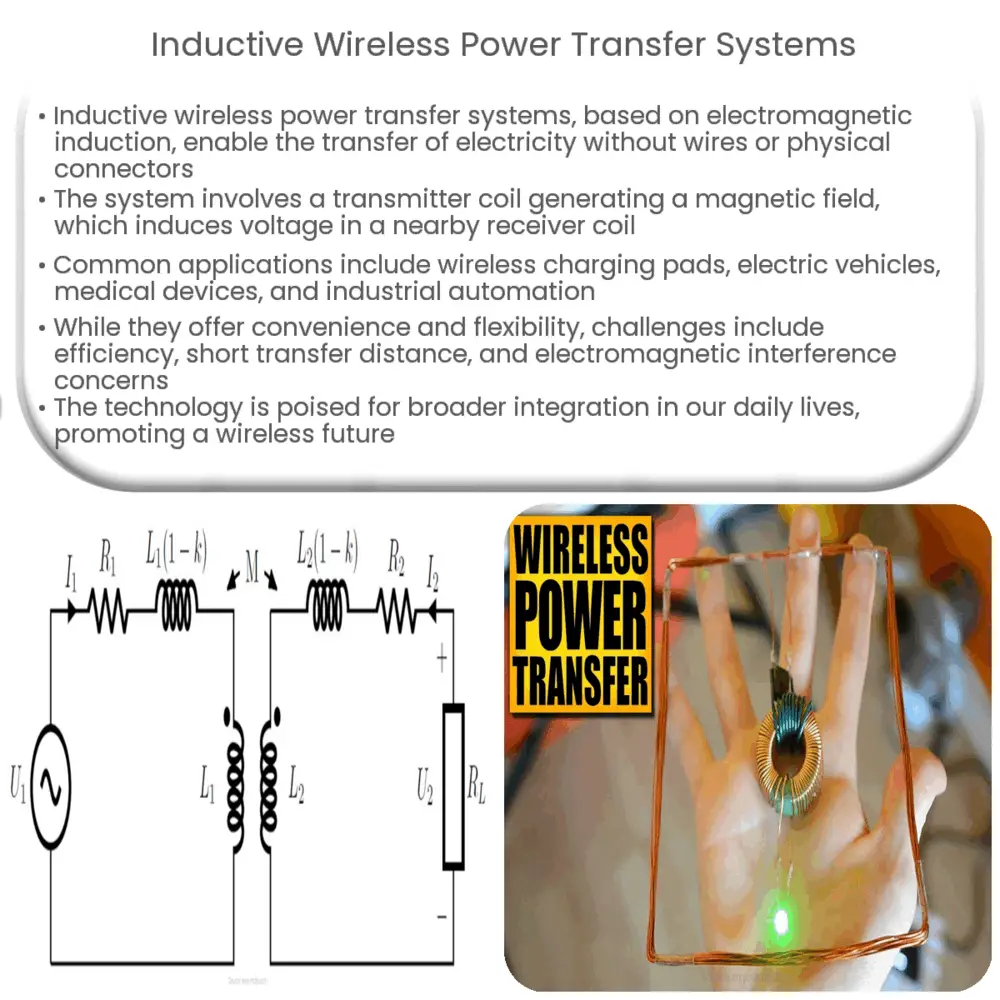Explore the workings, applications, challenges, and future of Inductive Wireless Power Transfer Systems, revolutionizing how we power devices.

Understanding Inductive Wireless Power Transfer Systems
Wireless power transfer (WPT) systems are not a new concept, but their significance and potential applications have grown tremendously in recent years. Among the different types of WPT systems, inductive wireless power transfer systems are the most common and widely used. They enable the transfer of electrical energy from a power source to an electrical load, without the need for physical connectors or wires. This technology has revolutionized the way we charge our devices, from smartphones to electric cars, and even medical implants.
How Inductive Wireless Power Transfer Systems Work
The fundamental principle behind inductive power transfer is electromagnetic induction. It involves two coils: a transmitter coil, which is connected to the power source, and a receiver coil, connected to the device needing power. When an alternating current is passed through the transmitter coil, it generates a magnetic field, which in turn induces a voltage in the receiver coil. This process can be summed up in four basic steps:
- The power source provides AC power to the transmitter coil.
- The transmitter coil converts this electrical energy into a magnetic field.
- The receiver coil captures this magnetic field and converts it back into electrical energy.
- The converted electrical energy is used to power or charge the device connected to the receiver coil.
It’s important to note that inductive power transfer requires close proximity or contact between the transmitter and receiver coils for efficient power transfer.
Applications of Inductive Wireless Power Transfer
Inductive wireless power transfer has a wide range of applications. Many of us are familiar with its use in wireless charging pads for smartphones and smartwatches. However, this is just the tip of the iceberg. Here are some more applications:
- Electric Vehicles: Electric vehicles (EVs) can be charged using inductive power transfer systems installed in parking spaces or garages.
- Medical Devices: Implantable medical devices such as pacemakers and insulin pumps can be safely charged with this technology, avoiding the need for wires or surgery to replace batteries.
- Industrial Automation: Industrial machinery and robots can be powered wirelessly, reducing the risk of damage from physical connectors and increasing efficiency.
The flexibility and ease of use provided by inductive wireless power transfer systems have the potential to fundamentally change how we power our devices and machinery, making our lives easier and more convenient.
Challenges and Future of Inductive Wireless Power Transfer Systems
While inductive wireless power transfer is transforming our power usage and charging capabilities, it isn’t without its challenges. The foremost challenge is the limitation of distance. For efficient power transfer, the transmitter and receiver coil need to be in close proximity, which limits its application to a certain extent. Furthermore, there are efficiency concerns. Although advancements have been made, wireless charging systems are still not as efficient as traditional wired systems, leading to energy loss during the transfer.
Another critical concern involves safety and interference. The emission of electromagnetic fields needs to be carefully managed to prevent interference with other devices and to comply with health and safety regulations. Despite these challenges, the research and development in this field are continuous, with the focus on improving efficiency, increasing the power transfer distance, and ensuring safety.
The Future Holds Promise
Looking ahead, we can anticipate that inductive wireless power transfer systems will become even more prevalent. Future applications could include wireless charging roads for electric vehicles, further reducing the reliance on fossil fuels and encouraging the adoption of electric transportation. With continued research and innovation, inductive wireless power transfer systems are expected to become an integral part of our daily lives, further driving the trend of wireless connectivity and convenience.
Conclusion
In conclusion, inductive wireless power transfer systems represent a significant technological advancement that is reshaping our approach to energy usage and device charging. Despite the challenges they currently face, the potential benefits and applications of this technology are vast. With continued research and improvement, we can look forward to a future where wires and connectors become a thing of the past. As we transition towards a more wireless world, inductive power transfer systems will continue to play a crucial role, making our lives increasingly convenient and efficient.



